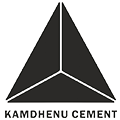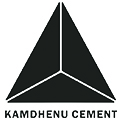Plastering is an important factor in building construction. It is crucial to choose materials wisely in the process of plastering. It is a process in which a smooth mixture of plaster is applied to the walls of the structure. It provides various benefits to the building structure. It gives strength and durability to the foundation. The plaster on the interior and exterior of the walls makes its appearance way more preferable. It helps to maintain thermal energy inside the building concerning the exterior environment of the building. The benefit of plastering is its ability to reduce noise levels within a building. This can help to contain fires and prevent damage to the building’s structure and contents, leading to increased safety and reduced repair costs. Hence, It is important to choose the best materials in construction to enhance productivity.
Cement is one of the fundamental materials in building construction. It is a grey powder used in the mixture of plastering. It helps to build the strength of the foundation. It ensures the durability of the structure. Hence, The quality of the cement is a crucial factor for a strong and durable foundation. In this blog, we are going to know which cement is best for plastering. What are the grades of the cement and which cement is best for the roof?
Primarily, we start with the most asked question, “ What are the grades of the cement?”
The main component of plastering is cement and choosing the best cement concerning the particular area to apply is a wise decision. Several types of cement are used in different areas. The characteristics of the cement that differentiated them from others. The different types of cement that are commonly used for plastering:
- Ordinary Portland Cement (OPC)
- Portland Pozzolana Cement (PPC)
- Rapid Hardening Cement (RHC)
- Quick Setting Cement (QSC)
- Sulphate Resistant Cement (SRC)
- White cement
Now, let’s take a closer look at each of these types of cement and their suitability for plastering.
1. Ordinary Portland Cement (OPC):
It is a very common type of cement in building construction. OPC is a cement type that is used most widely because of its availability. It is a mixture that is made up of limestone and clay. Hence, It has a great Binding ability that contributes to the strength and longevity of the building. But it has a disadvantage. It is best suitable for dry climatic conditions because in humid areas it soaks moisture and leads to cracks and damaged structure.
2. Portland Pozzolana Cement (PPC):
PPC is considered the best cement for plastering. It is a mixture that is made by blending Portland cement clinker with pozzolanic materials such as fly ash or volcanic ash. It has a thermal resistant capacity and resistance to any water effect which means it does not lead to cracks or any damage to the property due to any climate change and high levels of humidity. Additionally, it improves the longevity of the building structure.
3. Rapid Hardening Cement (RHC):
It is a specialized cement that is designed for quick adhesion. It sets and hardens quickly. It has two subgrades in its form that is RHC 43 and RHC 53. RHC 53 is preferable to 43 because of its quick adhesion property. It is used in crack repair and precast concrete elements. However, it is not recommended for large roofing projects, as it can crack if it sets too quickly.
4. Quick Setting Cement (QSC):
QSC is another grade of cement used in small projects that requires quick recovery or quick settlement of plasters. It is an alternative to the RHC. It settles down faster than RHC. But, It is only used in small projects like crack repairing and roof fixing that require a short duration of time in adhesion.
5. Sulphate Resistant Cement (SRC):
As its name depicts, SRC is specially designed as a sulfate-resistant cement. It is used where there is a high concentration of sulfate in the surrounding area. Sulfate affects the building structure in negative aspects. So, it became necessary to design a cement that is sulfate resistant for building strength and longevity. Because of its special feature, it is one of the most expensive types of cement.
6. White cement
White cement is the most popular and demanding grade of cement. It is widely used in cement, especially for roofing applications. It is white which makes it unique among others. It is also used as a decorative element for the building. White cement provides excellent durability and resistance to weathering. However, it is more expensive than other types of cement.
7. Low Heat Cement (LHC)
LHC is a type of cement that generates less heat during hydration, making it ideal for use in large concrete structures like dams and foundations. It is available in one grade, which is 38. The compressive strength of LHC after 28 days of curing is around 33 MPa.
Now the most common question that arises in your mind is which is the best cement for plastering and roofing?
Now here are some of the most important componants which are more baneficial to create good mixture of cement while build house reads,etc….
We discussed the grades of the cement. The qualities they exhibit and their specialized features for building construction. Based on the above analysis, the best type of cement is Portland Pozzolana Cement (PPC). It has several characteristics that make it preferable globally. It is made by the blending mixture of Portland cement clinker with pozzolanic materials such as fly ash or volcanic ash. The crucial process like plastering is one of the basic factors of a strong foundation. It ensures the durability of the building constructions. Hence, it is important to choose the best to prevent any damage to the property and the lives living in it. Portland Pozzolana Cement (PPC) is the best for plastering as it provides strength, longevity, stability, and durability to the building. PPC has a lower heat of hydration than OPC, which makes it ideal for use in plastering. Additionally, PPC is more resistant to the effects of water than OPC, which makes it suitable for use in areas with high levels of moisture. PPC has wide applications.
It is also the best cement considered for roofing. It gives support and smooth finishing to the building structures. It enhances productivity.
In conclusion, There are seven different grades of cement available on the market Ordinary Portland Cement (OPC), Portland Pozzolana Cement (PPC), Rapid Hardening Cement (RHC), Sulphate Resisting Cement (SRC), and Low Heat Cement (LHC), Quick Setting Cement (QSC) and White Cement. Each grade of cement has its specific properties and applications. But the best cement for plastering, especially in roofing is Portland Pozzolana Cement because of its availability, affordability, and its qualities.


